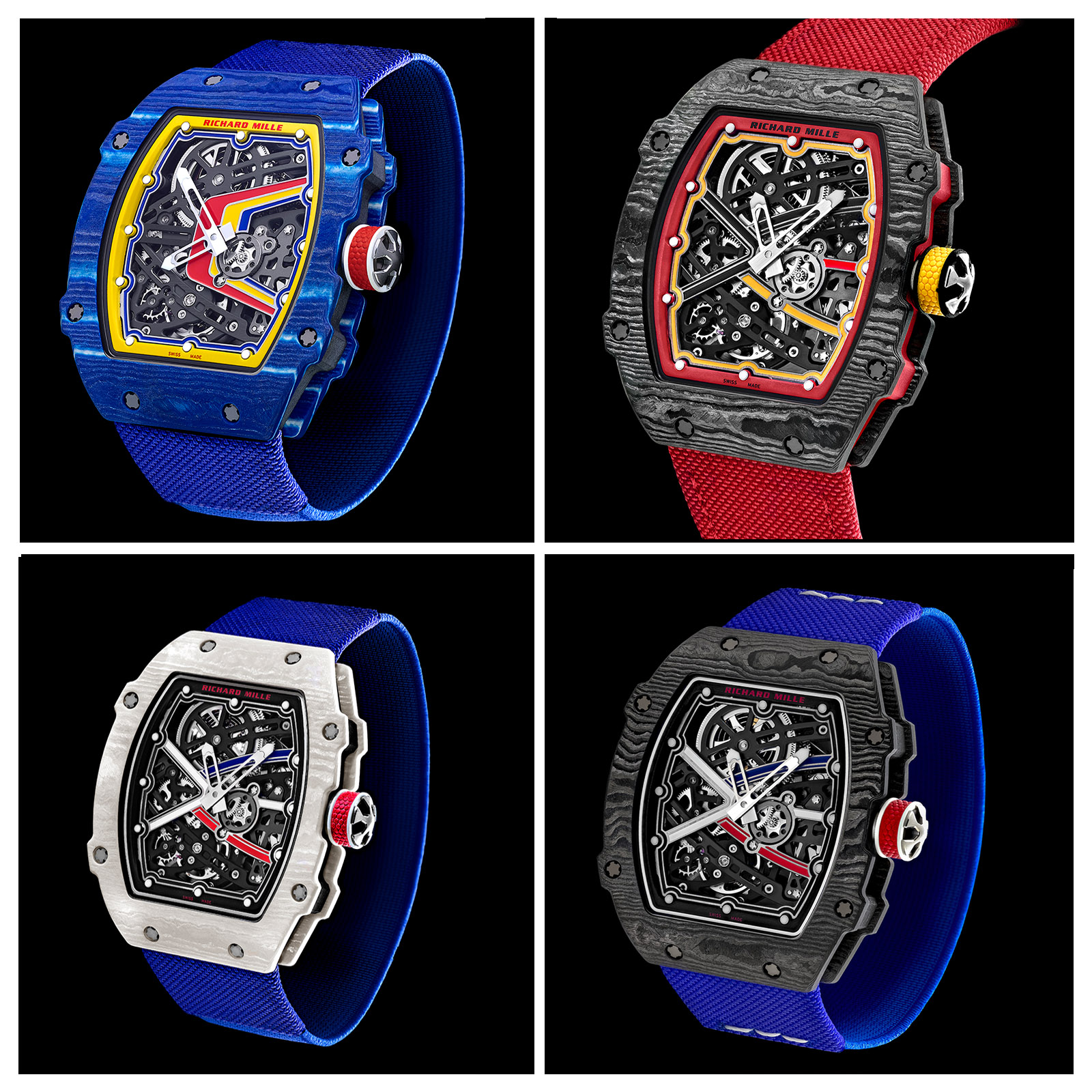Richard Mille Introduces the RM 67-02 – In Four New Colours
Extra-thin, ultra-light, and in all colours.
First unveiled in plain titanium in 2015, then last year in carbon composite for Olympic medalists Wayde van Niekerk and Mutaz Essa Barshim, the RM 67-02 is the lightest automatic yet from Richard Mille, weighing next to nothing at a mere 32g, including the strap – that’s equivalent to just seven sheets of A4 printer paper.
Four distinct variations of the watch have now been conceived for a further four of the brand’s ambassadors, including 21-year old German tennis sensation Alexander Zverev, French alpine ski-racing superstar Alexis Pinturault, five-time World Rally champion Sébastien Ogier, as well as double F1 world champion and McLaren F1 driver, Fernando Alonso.
While the four watches vary in colour, fashioned in the colours of the athletes’ respective national flag, they share the same case, fabricated from carbon composite made by North Thin Ply Technologies (NTPT). supremely light and exceptionally strong, the cases have a distinctive woodgrain surface that’s the result of the layers of carbon fibres inside.
The RM 67-02 Alexander Zverev, for instance, features Carbon TPT front and back plates, a red Quartz TPT caseband and a yellow crown protector, with the same tricolor of the German flag reflected across the hand-painted grade 5 titanium dial.
RM 67-02 Alexander Zverev
All four watches measure a moderately large 38.7mm by 47.52mm, but just 7.8mm in height.
RM-67-02 Sébastien-Ogier
They are powered by the same CRMA7 movement, the seventh in-house calibre from Richard Mille. Its bridges and base plate are made of titanium and has been extensively skeletonised to further trim the movement’s weight. The rotor is open-worked carbon composite, with a white gold rim screwed to its periphery as a winding mass.
Each watch is fitted with a seamless elastic strap: the Richard Mille “comfort” strap. The material is formed out of a specially conceived weave that essentially sits like a second skin on the wrist while ensuring ample airflow and security.
Price and availability
Prices have yet to be announced, but expect it to cost approximately SFr118,000, which is the retail price of the earlier versions of the RM 67-02.
Back to top.